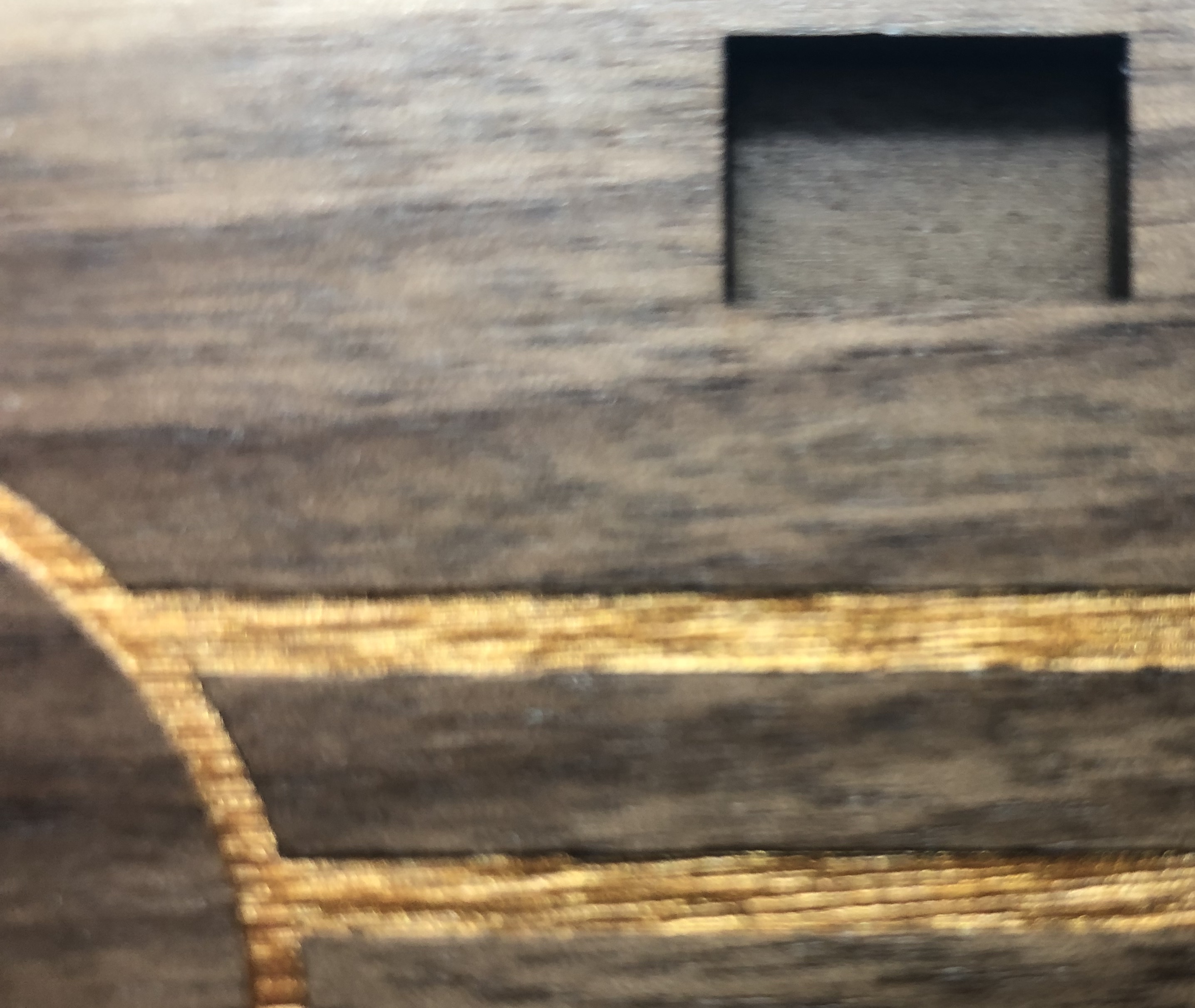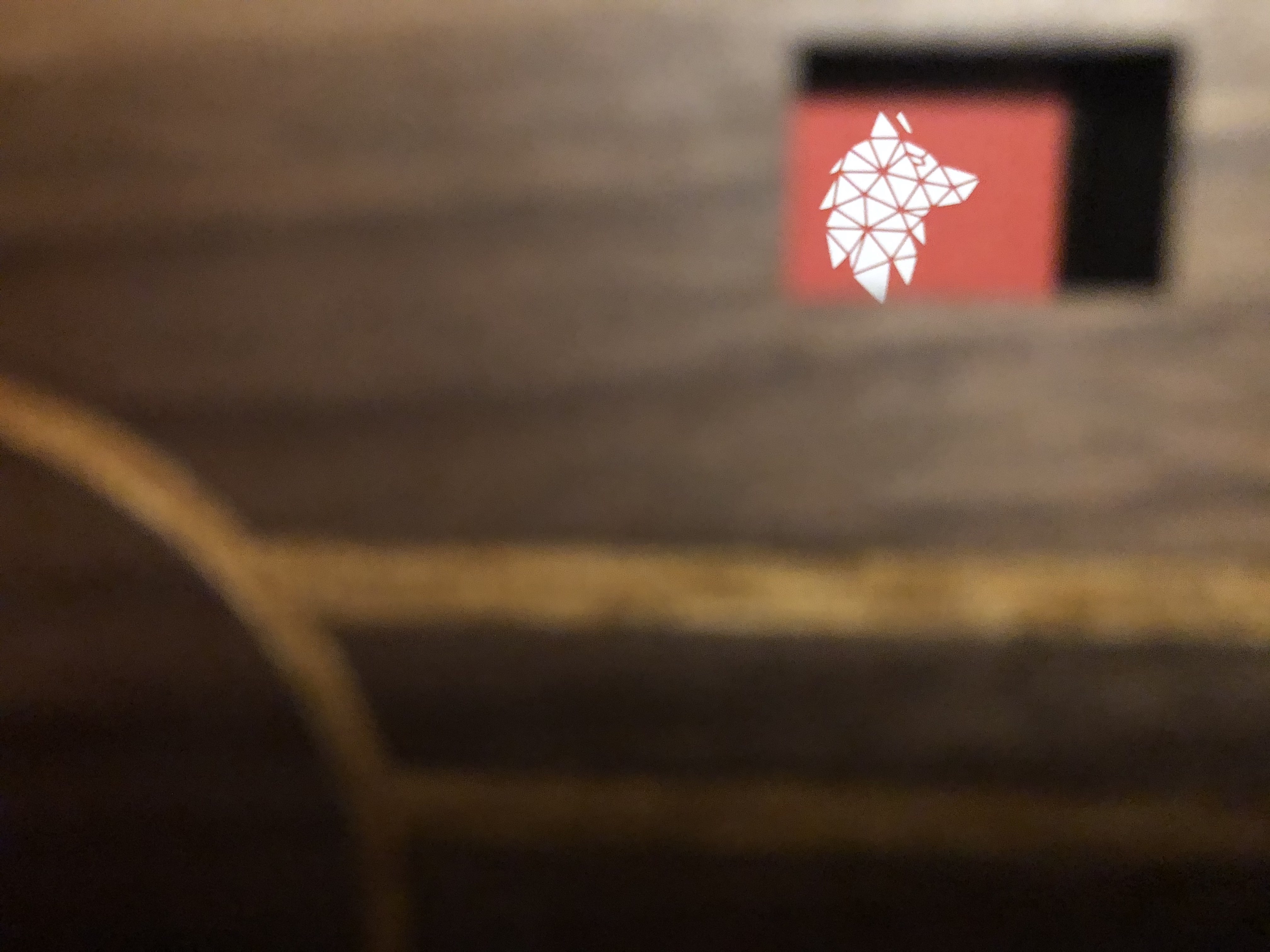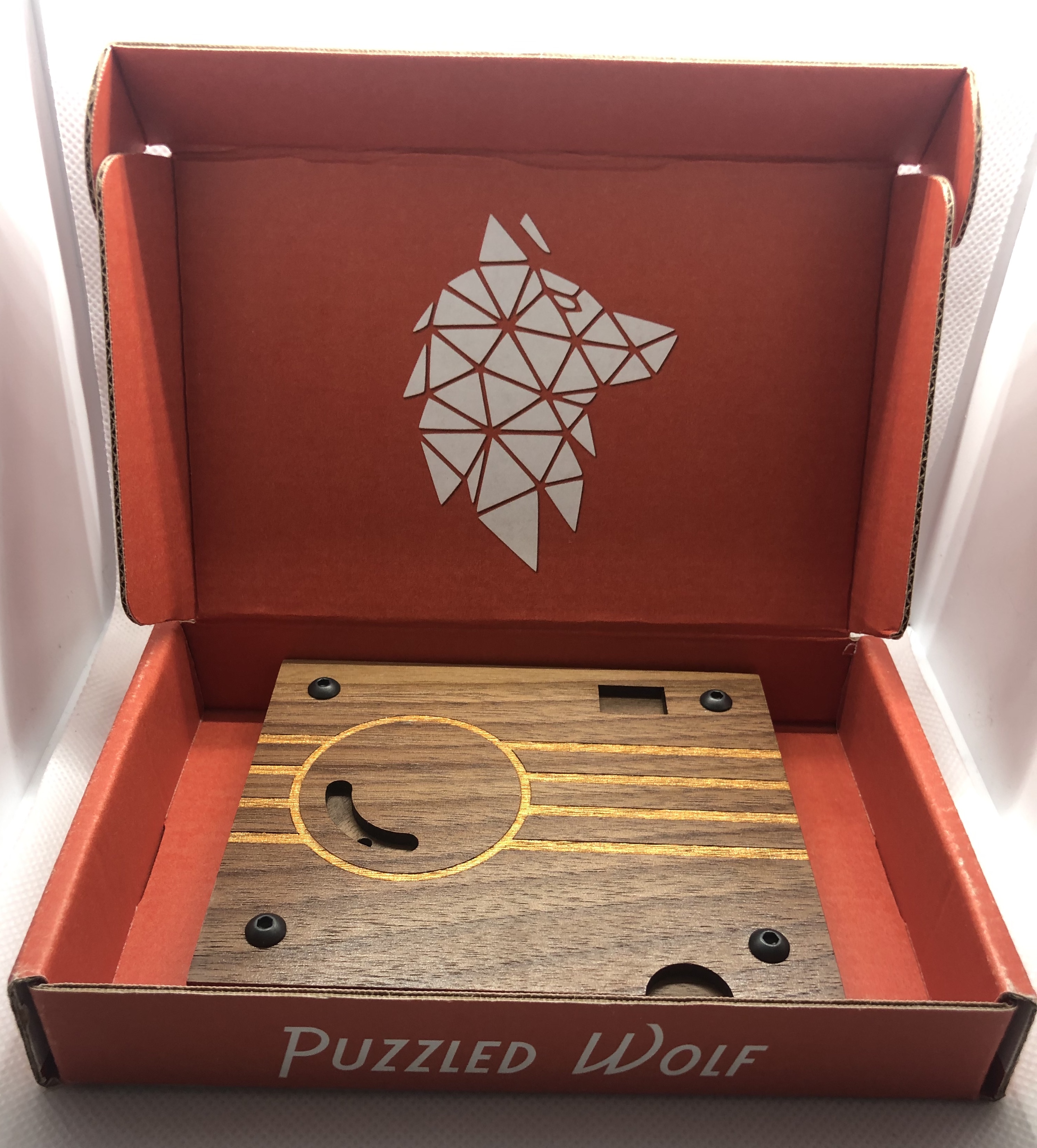Asymmetric Cube
Hideaki Kawashima
The newest box from Karakuri member Hideaki Kawashima is the fifth in his Bars Box series, consisting of Bars Boxes I – IV, 2018 – 2019. Asymmetric Cube’s name is a
departure from the series and, while it continues to feature the series’ titular bars, its design represents the biggest leap forward yet.

Its asymmetric appearance is the first indication that Kawashima’s tendency to play with puzzler expectations is central to the box’s design. The series has always managed to both create and confound assumptions, something that is clear just from looking at his newest creation. As with each consecutive box in the series, the solution differs completely from that which preceded it, and the approach is unclear from the moment you pick it up.

Kawashima’s craftsmanship is as meticulous as ever, the potential location of breaks in any of the panels remaining unapparent even upon close inspection. For the first time since Bars Box I, he has eschewed the dominance of walnut in favor of alternating panels of different woods, further developing the asymmetric theme as their colors are unmatched from varied perspectives, with panels of three different woods framing the off-center bars visible at any given time. The box uses more woods than its previous siblings, featuring five woods: magnolia, purpleheart, padauk, zelkova, and maple, a design choice that reflects the box’s place as the fifth in the series. It may take a moment to notice another way in which the design directly reflects its place in the Bars Box series; forsaking the numbered sequence of titles used thus far, Kawashima has instead integrated this into the design itself, a small aha that can be enjoyed even without the pleasure of seeing the box in person.
Kawashima’s craftsmanship is as meticulous as ever, the potential location of breaks in any of the panels remaining unapparent even upon close inspection. For the first time since Bars Box I, he has eschewed the dominance of walnut in favor of alternating panels of different woods, further developing the asymmetric theme as their colors are unmatched from varied perspectives, with panels of three different woods framing the off-center bars visible at any given time. The box uses more woods than its previous siblings, featuring five woods: magnolia, purpleheart, padauk, zelkova, and maple, a design choice that reflects the box’s place as the fifth in the series. It may take a moment to notice another way in which the design directly reflects its place in the Bars Box series; forsaking the numbered sequence of titles used thus far, Kawashima has instead integrated this into the design itself, a small aha that can be enjoyed even without the pleasure of seeing the box in person.
It took me quite a while to find my way through to the center of Asymmetric Cube; the initial aha eluded me for longer than I would have expected and, having broken through to the foundation of the solution, I nonetheless got turned around, as with any well-designed Karakuri cube. The reveal is unique
as well, the final discoveries occurring in a manner as different from its predecessors as its aesthetic. Finally, upon reaching the end, Kawashima integrated additional design elements that are only visible upon reaching the solution; this is a somewhat rare addition adding some excellent detail work to surprise and welcome you to the box’s hidden compartment.
Kawashima’s fifth entry in the Bars Box series is a more nuanced and complex design than used in previous installments, as should be expected from a non-holiday release that carries a concomitantly higher price tag. It is, by far, the best yet of the series and sits as one of the best Kawashima boxes overall that I have had the pleasure of solving, showing that his puzzling design skills have only continued to grow more nuanced with time.






























































